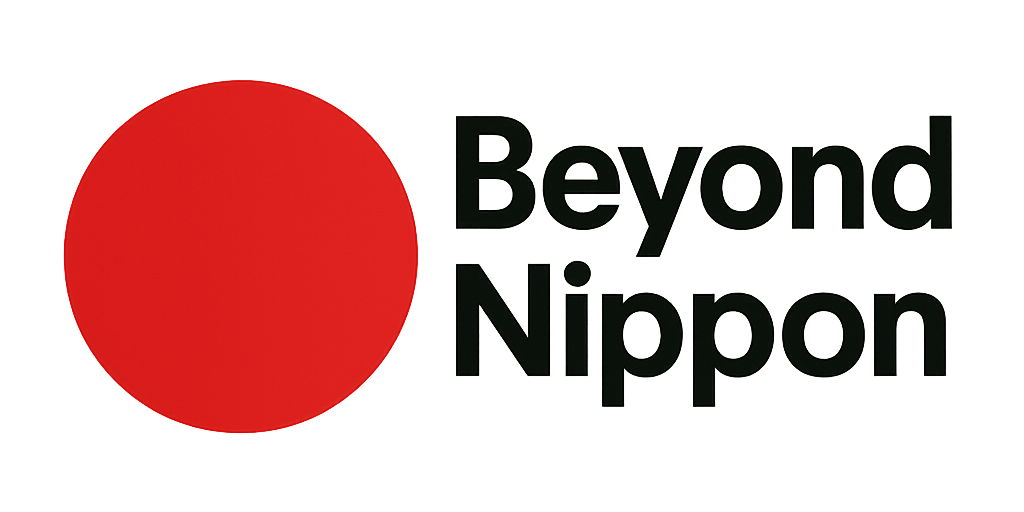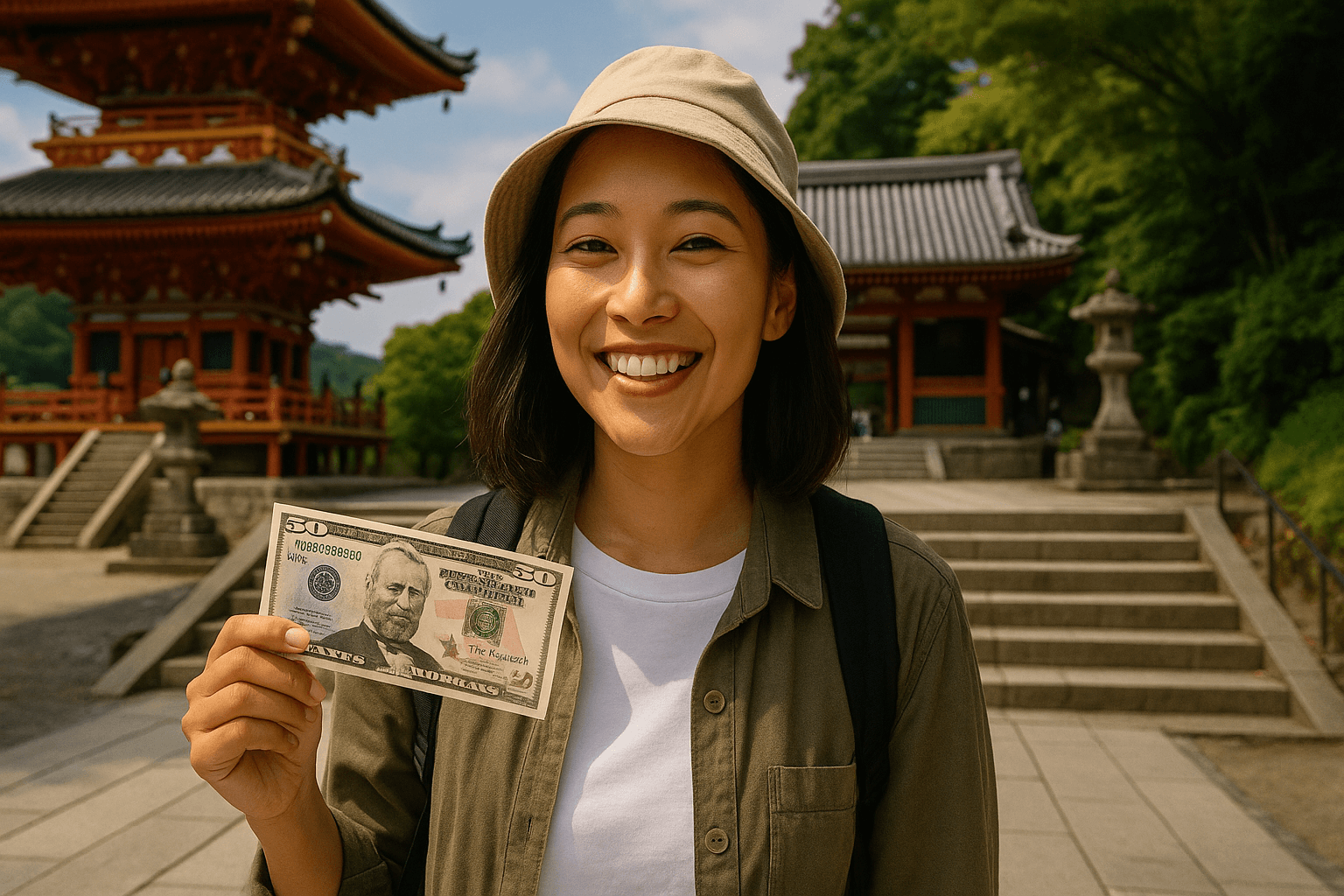Japan has a reputation for being one of the most expensive countries in Asia—images of luxury hotels, fine sushi, and pricey bullet train rides often scare off budget-conscious travelers. But here’s the good news: with smart planning, you can experience Japan’s culture, food, and sights on as little as $50 a day.
This budget travel Japan guide shows you how. From transport hacks to cheap eats, free attractions, and even a sample itinerary, you’ll discover that exploring Japan doesn’t require a fortune—just the right strategy.
Is Japan Expensive?
Let’s be honest—Japan can be expensive if you dive straight into luxury hotels, Michelin-starred restaurants, and unlimited shinkansen rides. But daily life in Japan is surprisingly affordable if you know where to look:
- Food: A filling bowl of ramen costs about ¥800–¥1,000 ($6–$7). A beef bowl at Yoshinoya or Sukiya? As low as ¥400 ($3).
- Accommodation: Capsule hotels, hostels, and guesthouses start around ¥2,500–¥3,000 ($18–$22).
- Transport: Walking, bikes, and local trains are cheap alternatives to pricey express lines.
- Attractions: Many shrines, parks, and cultural spots are free or cost just a few hundred yen.
So while Japan has luxury experiences for those who want them, you don’t have to break the bank. With thoughtful choices, $50 a day is more than enough.
Transport Tips: Getting Around on a Budget
Transportation is one of the biggest costs for travelers in Japan. But with the right passes and planning, you can stretch your budget.
Walk or Rent a Bicycle
Japanese cities are pedestrian-friendly and safe.
- Walking helps you discover side streets and hidden gems.
- Many cities like Kyoto, Kanazawa, and Matsuyama have cheap bike rentals (¥500–¥1,000 per day).
Use IC Cards
Get a prepaid IC card like Suica or Pasmo in Tokyo, or Icoca in Kansai. Load money onto it and tap in/out of trains and buses. It’s cheaper than buying single tickets every time.
Take Local Trains and Buses
Avoid limited express trains unless necessary. Local trains are slower but much cheaper.
- Example: Tokyo to Yokohama on a local train costs about ¥480 ($3.50).
- Highway buses between cities (like Tokyo–Osaka) cost ¥3,000–¥4,000 ($25–$30), compared to ¥14,000 ($100+) for a shinkansen.
Consider Passes (If You’re Traveling a Lot)
The famous Japan Rail Pass is great for long trips, but expensive if you’re on a tight budget. Instead:
- Regional passes (like JR Kansai Area Pass) cost less and cover specific zones.
- Bus passes (like the Willer Express Pass) allow unlimited long-distance bus travel at a fraction of shinkansen prices.
💡 Pro Tip: Stick to one region (e.g., Kansai or Kyushu) to cut down on travel costs, rather than trying to see all of Japan in one trip.
Budget Food Options: Delicious and Cheap
Japan may be known for gourmet sushi and kaiseki, but everyday food is incredibly affordable. Here’s how to eat well on a budget:
Convenience Stores (Conbini)
7-Eleven, Lawson, and FamilyMart are lifesavers. For under ¥600 ($4.50), you can grab:
- Onigiri (rice balls) for ¥120 ($1 each).
- Bento boxes with rice, meat, and vegetables for ¥400–¥500 ($3–$4).
- Sandwiches, salads, and even decent coffee.
Ramen Shops
A steaming bowl of ramen costs around ¥800 ($6). Chains like Ichiran and Ippudo are famous, but small local shops are cheaper and just as tasty.
Gyudon Chains
Sukiya, Yoshinoya, and Matsuya serve hearty beef bowls with miso soup for ¥400–¥500 ($3–$4). Fast, filling, and cheap.
100 Yen Shops
Daiso and Seria aren’t just for souvenirs—they often sell snacks, instant noodles, and drinks for ¥100 ($0.70).
Supermarkets and Depachika
Supermarkets discount bento, sushi, and prepared meals in the evening (sometimes 30–50% off). Department store food basements (depachika) also offer cheap gourmet options if you shop before closing.
💡 Pro Tip: Breakfast at a convenience store, lunch at a gyudon chain, and dinner with a discounted supermarket bento keeps your food budget under $15/day.
Accommodation Hacks: Where to Sleep on a Budget
Hotels in Japan can be pricey, but plenty of alternatives cater to budget travelers.
Hostels
- Dorm beds range from ¥2,000–¥3,500 ($15–$25).
- Clean, safe, and social—great for meeting other travelers.
Capsule Hotels
- Famous Japanese invention offering small pods for sleeping.
- Prices: ¥2,500–¥4,000 ($18–$30) per night.
- Many come with shared baths, lounges, and lockers.
Business Hotels
Chains like Toyoko Inn, APA Hotel, and Dormy Inn offer simple rooms starting at ¥4,000 ($30). Better for couples than hostels.
Guesthouses and Minshuku
Family-run inns (minshuku) or Airbnb-style guesthouses offer budget-friendly stays with local charm.
💡 Pro Tip: Book early in popular cities like Kyoto and Tokyo. Prices rise closer to peak travel dates.
Free Attractions and Cheap Activities
Japan is full of free or inexpensive cultural experiences that enrich your trip without draining your wallet.
Shrines and Temples
Most Shinto shrines are free to enter. Temples often cost only ¥300–¥600 ($2–$4).
- Free shrines: Meiji Shrine (Tokyo), Fushimi Inari (Kyoto), Itsukushima Shrine grounds (Miyajima).
- Low-cost temples: Senso-ji (Tokyo), Kinkaku-ji (Kyoto), Todai-ji (Nara, ¥600).
Parks and Nature
- Tokyo: Ueno Park, Yoyogi Park, Imperial Palace East Gardens.
- Kyoto: Philosopher’s Path, Arashiyama bamboo groves (free to enter).
- Mountains & countryside: Many hiking trails are free.
Museums and Culture
- Many museums have low entry fees (~¥500 or $3.50).
- Tokyo’s Edo-Tokyo Museum and Hiroshima Peace Memorial Museum cost under ¥1,000 ($7).
Festivals
Matsuri (festivals) are free to attend. Highlights include Gion Matsuri in Kyoto or Nebuta Matsuri in Aomori.
City Views
Skip pricey towers. Instead, enjoy free cityscapes from:
- Tokyo Metropolitan Government Building (free observation deck).
- Osaka Umeda Sky Building (fee is modest compared to Tokyo Skytree).
Sample Daily Itinerary (Under )
Here’s how a budget travel Japan day might look in Tokyo or Kyoto, keeping meals, transport, and activities affordable.
Morning
- Breakfast (¥300 / $2.20): Grab an onigiri and coffee from 7-Eleven.
- Free Attraction: Visit a shrine or temple (e.g., Meiji Shrine in Tokyo or Fushimi Inari in Kyoto).
- Transport (¥200–¥400 / $1.50–$3): Use your IC card for short train hops.
Lunch
- Gyudon bowl at Sukiya (¥450 / $3.50) with miso soup.
Afternoon
- Cultural Experience: Explore Ueno Park (free) or Philosopher’s Path (free).
- Museum Visit (¥500 / $3.50): Edo-Tokyo Museum or Kyoto National Museum.
Dinner
- Discounted supermarket bento (¥500–¥600 / $4–$5).
Evening
- Stroll a nightlife district (free): Shinjuku Omoide Yokocho in Tokyo or Pontocho Alley in Kyoto. Even if you don’t drink, the atmosphere is worth it.
Accommodation
- Capsule hotel or hostel dorm (¥3,000 / $22).
💡 Total Daily Spend:
- Food: $12
- Transport: $6
- Attractions: $4
- Accommodation: $22
- Grand Total: $44
That leaves a little extra wiggle room for snacks, coffee, or souvenirs.
Conclusion
Japan doesn’t have to drain your wallet. With hostels and capsule hotels, cheap but delicious meals, affordable transport, and countless free attractions, traveling on a shoestring is not only possible—it’s enjoyable.
This budget travel Japan guide has shown you how to stretch $50 a day without sacrificing experiences. Instead of limiting your trip, traveling on a budget can actually help you see a more authentic side of Japan—from chatting with locals at a gyudon shop to discovering quiet shrines off the beaten path.
So don’t let the myth of “expensive Japan” hold you back. Pack light, plan smart, and get ready to explore one of the world’s most fascinating countries—without breaking the bank.

